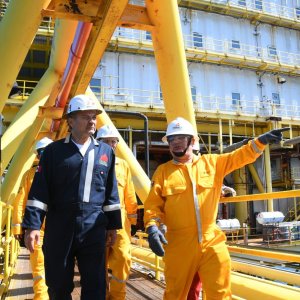Why Net Zero and How to Achieve It

STORY INLINE POST
Leading organizations around the world are making net-zero emissions pledges and claims, many others are rushing to follow the trend. Businesses within the most pollutant-intensive sectors see the need to cut down on emissions as they are forced to pay a carbon tax or to participate in an Emissions Trading System (ETS) as part of a country’s strategy to deliver its commitment to the Paris Agreement, the major international treaty that sets out a global framework to reduce greenhouse gas (GHG) emissions to mitigate climate change and pursue efforts to limit it to 1.5°C as set out by the United Nations Framework Convention on Climate Change (UNFCCC).
Nevertheless, despite reaching certain reductions to comply with the emissions limit, or cap, imposed by governments, some companies may still not be aware of the full emissions reduction potential. Likewise, driven by the global demand for supply chains with less environmental impact, companies that are not covered or limited by regulatory systems are increasingly interested in taking climate action.
Regardless of the reason behind implementing decarbonization strategies and setting reduction targets statements, their integrity and ambition needs to overcome the criticism and scepticism around their credibility.
What is Net Zero?
Throughout the world, definitions are still being discussed but beyond doubt, the best practice is to achieve significant reductions along with large-scale removals to avoid the countereffects of further CO2 accumulation, and to lower past anthropogenic emissions that remain in the atmosphere. For the Intergovernmental Panel on Climate Change (IPCC), the most important source of comprehensive scientific, technical, and socioeconomic information on climate change at a global scale, the terms carbon neutrality and net-zero CO2 emissions are equivalent.
At sub-global scales, the phrase ‘net-zero CO2 emissions’ is generally applied to emissions and removals under direct control or territorial responsibility of the reporting entity, over a specified period, while carbon neutrality generally includes emissions and removals within and beyond the direct control or territorial responsibility of the reporting entity, often assessed over the life cycle. In some cases, achieving carbon neutrality may rely on the supplementary use of offsets to balance emissions that remain after actions by the reporting entity are considered.
At a company level, net zero would mean scope 1 and scope 2 emissions coverage, and carbon neutrality would also include indirect scope 3 and both could be limited to emissions over a specified period.
To be truly competitive, businesses seeking to commit to net-zero emissions must be able to demonstrate that their statements, either self-defined or backed up by standards or certifications, follow recognized best available practices to set green targets and track their progress.
Universally Recognized Best Available Practices
The following are the main initiatives available for businesses. Most share the same generalities and methodology: they set emissions reduction targets in line with IPCC reports, require public reporting of yearly progress, and recognize businesses by listing them on corresponding sites.
The UNFCCC launched a global campaign called Race to Zero, the largest ever alliance committed to achieving net-zero carbon emissions by 2050. Race to Zero is an umbrella campaign driven by science and aggregated leading climate action networks and initiatives. Partners must be approved by the UNFCCC and are grouped by different types of actors: cities, states/regions, investors, chambers of commerce, universities, etc. Entities that want to become members of the Race to Zero campaign can join the initiative or network of their preference and are required to meet the corresponding partner’s criteria.
According to Race to Zero, a state of net zero is reached when an actor reduces its emissions following science-based pathways, with any remaining GHG emissions attributable to that actor being fully neutralized by like-for-like removals (for example, permanent removals for fossil carbon emissions) exclusively claimed by that actor, either within the value chain or through the purchase of valid offset credits.
Offset credits originated on the avoidance or reduction of emissions are not valid to neutralize remaining emissions under the logic that these result in emitted carbon staying in the system. Moreover, the additional rationale that there would’ve been more emissions elsewhere if it wasn’t for these reduction efforts is hard to prove. On the other hand, neutralizing with permanent carbon removals, in fact, does take carbon out of the system, hence lowering atmospheric CO2 concentrations.
Business Ambition for 1.5°C – Our Only Future
The Business Ambition for 1.5°C campaign, led by the Science Based Targets (SBTi) in partnership with the UN Global Compact and We Mean Business coalitions, stands out as it launched the world-first Net-Zero Corporate Standard, which provides resources that enables companies to align their near- and long-term climate action to limiting global warming to 1.5°C and a credible, independent assessment and certification of corporate net-zero targets.
The SBTi’s main principle is the mitigation hierarchy, requiring companies to achieve a deep, own value chain decarbonization of 90-95 percent before 2050 and neutralizing any residual emissions that can’t be cut. Additionally, while on the road to net zero, companies are highly encouraged to invest and support climate mitigation beyond their value chains.
Other main initiatives for businesses are: Business Declares, The Climate Pledge, Exponential Roadmap Initiative and Planet Mark.
Taking Climate Action
Companies that want to take climate action can follow different routes according to what they want to accomplish and demonstrate. However, the key is to have a proper understanding and clearly communicate the criteria considered for GHG accounting and reporting, considering the boundaries, the target time frame and the period over which the emissions balance was assessed.
Tlalli Energia aims to help businesses to better assess their emissions, to support the development and implementation of a mitigation strategy that may include reductions, abatement, insetting, compensation and/or neutralization measures in line with the desired outcomes. But most importantly, to ensure a smoother process and unlock opportunities related to a better environmental performance and understanding of the economic and operational co-benefits related to their climate actions.

























